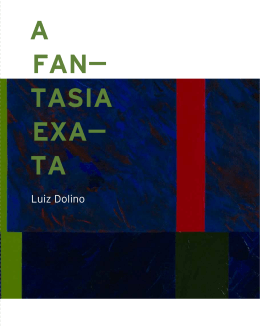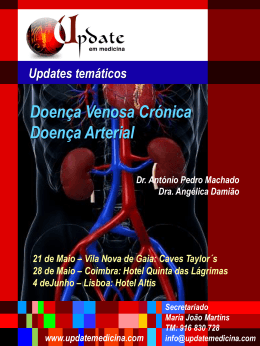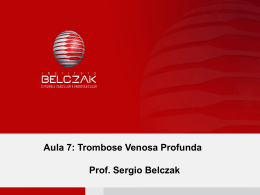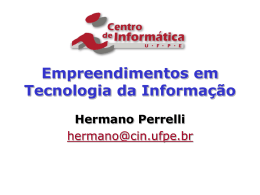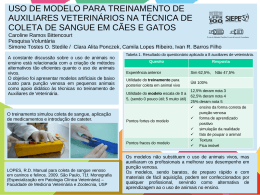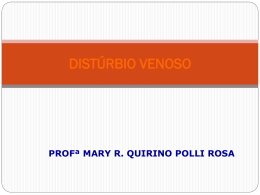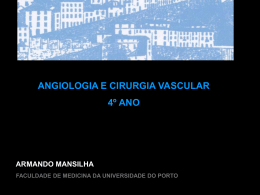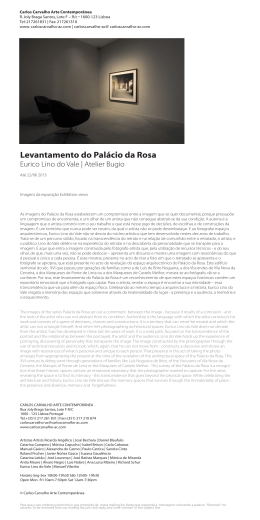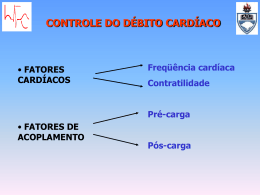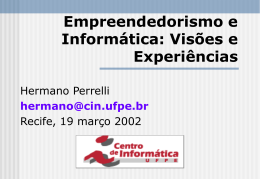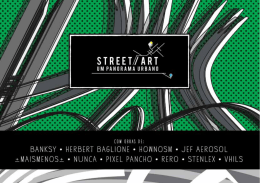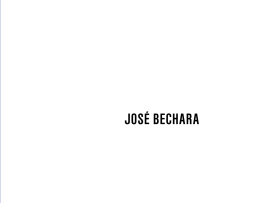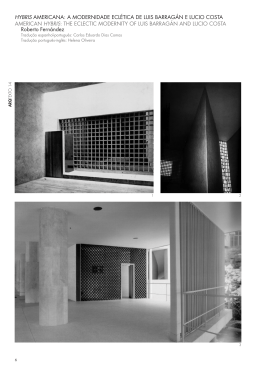1 2 Angelo Venosa São Paulo, 1954. Lives and works in Rio de Janeiro. Angelo Venosa emerged on the stage of Brazilian art in the 1980s, to become one of the leading artists of his generation. A sculptor par excellence amidst the painting boom, he followed the expressionist trend current at that time, already suggesting the phantasmatic and somber atmospheres that would come to characterize his work. Venosa has gone on to play a significant role in the Brazilian and international art scene, including participations in the Venice Biennale, the Bienal de São Paulo, and the Mercosul Biennial. There are currently four sculptures by the artist installed in public spaces in Brazil, and his artwork is featured in important Brazilian and international collections. In 2008, Cosac Naify publishers released a book providing an overview of his oeuvre. In the 1980s, Venosa’s artistic procedure began with rigid and planned structures - the skeleton of the work - which were later covered with resin and foam, creating organic bodies that belied their origin. He later explored biomorphic elements such as bones and teeth, in productions that accentuated the paradox between the natural and the artificial, between reality and fiction. The artist has recently begun to emphasize the defined and crosssectional structures that previously composed the interior of his work, making them the central focus. Like a “scientist,” he began to investigate the skeleton of the volumes, the structure that supports their flesh. In a sort of a lesson in dissection, the artist removes the skin of the objects to arrive at the structural elements of their body, the underpinnings of their form. The skeleton is all that is left, but it is this remainder which seems to interest the artist as a complete and living object. The challenge is not to make the artwork come alive with movement, in the sense of a literal kineticism, but rather to empower it through the exposure of its underlying layers and its spatial articulation. The artist treats the sculpture’s volume like a body cross-sectioned by tomography, subdivided into slices, as though aiming to reduce it to the terms of plane geometry. He dissects and rejoins its parts, in a phantasmatic assemblage that refers as much to the idea of the fossilization of a living being as to its opposite, the animation of the dead. Now unfleshed, shot through by voids, or transparent, what emerges is a body “between,” which is exposed in intervals, by cuts and by strange cinematic devices, which reanimate it. On the threshold between expressionism and geometry, between handmade and machine-assisted production, between reason and delirium, Angelo Venosa creates borderline situations that alternate between the fragment and the whole, between geometry and formlessness, between the lyric and the monstrous. And it seems that it is based on these paradoxes and a visuality of slices that he constructs his perspectives of poeticity. LIGIA CANONGIA Curator, Galeria Laura Alvim Turdus 21,2009 acrílico [acrylic] 120 x 120 x 170 cm 2 Icapa [cover] Turdus 170,2009 acrílico [acrylic] 20 x 20 x 45 cm 3 Há?, 2009 madeira [wood] 305 x 327 x 285 cm Angelo Venosa São Paulo, 1954. Vive e trabalha no Rio de Janeiro. Angelo Venosa surgiu na cena artística brasileira na década de 1980, tornando-se um dos expoentes dessa geração. Escultor por excelência, em meio ao boom da pintura, seguiu o viés expressionista.então em vigor, já sugerindo as atmosferas fantasmáticas e soturnas que iriam perdurar em sua obra. Desde esse período, Venosa lançou as bases de uma trajetória que se consolidou no circuito nacional e internacional, incluindo passagens pelas Bienais de Veneza, de São Paulo e do Mercosul. Hoje, o artista possui quatro esculturas públicas no país, trabalhos em importantes coleções brasileiras e estrangeiras, além de um livro panorâmico da obra, editado pela Cosac Naify, em 2008. Nos anos 80, Venosa partia de estruturas rígidas e planejadas - o esqueleto do trabalho - para em seguida revesti-las com resinas e espumas, criando corpos orgânicos que contrariavam sua origem. Mais adiante, explorou elementos biomórficos explícitos, como ossos e dentes, em produções que acentuavam o paradoxo entre o natural e o artificial, a realidade e a ficção. Recentemente, o artista passou a enfatizar as estruturas definidas e recortadas, que antes compunham o interior do trabalho, tornando-as protagonistas. Como um “cientista”, começou a esmiuçar o esqueleto dos volumes, a estrutura que sustenta sua carne. Em uma espécie de aula de dissecação, passou a retirar a pele dos objetos, para chegar aos elementos estruturais de seu corpo, aos pilares da forma. O esqueleto é o que sobra, mas é essa sobra que parece interessar como objeto pleno e vivo. O desafio da obra não é fazê-la vivaz pela motricidade, no sentido cinético e literal, mas dinamizá-la pela exposição de suas camadas subterrâneas e de sua articulação espacial. Venosa trata o volume da escultura como um corpo fatiado por tomografia, subdividido em lâminas, como a querer reduzi-lo a uma geometria de planos. Disseca e re-aglutina suas partes, em uma montagem fantasmática que tanto nos indicia a ideia de fossilização da coisa viva, quanto, ao contrário, de animação dos mortos. Agora desencarnado, pleno de vazios, ou transparente, trata-se de um corpo “entre”, que se expõe por intervalos, cortes e estranhos dispositivos cinemáticos que o reanimam. Entre o expressionista e o geômetra, o artesanato e a máquina, entre razão e delírio, Angelo Venosa cria situações fronteiriças, que se alternam do fragmento ao todo, da geometria ao informe, do lírico ao monstruoso. E parece §eî a partir desses paradoxos e de uma visibilidade cindida que constrói suas perspectivas de poeticidade. LIGIA CANONGIA Curadoria da Galeria Laura Alvim Governador do Estado do Rio de Janeiro [Governor of the State of Rio de Janeiro] Sérgio Cabrai Vice-Governador do Estado do Rio de Janeiro [Vice Governor of the State ofRio de Janeiro] Luiz Fernando de Souza Pezão Secretária de Estado de Cultura [State Secretary of Culture] Adriana Scorzelli Rattes Presidente da Fundação Anita Mantuano de Artes do Estado do Rio de Janeiro ( fu n a r j ) [President of the Fundação Anita Mantuano de Artes do Estado do Rio de Janeiro ( fu n a r j )] Adriana Scorzelli Rattes Vice-Presidente da Fundação Anita Mantuano de Artes do Estado do Rio de Janeiro ( fu n a r j ) [Vice President of the Eundação Anita Mantuano de Artes do Estado do Rio de Janeiro ( fu n a r j )] Emanuel de Melo Vieira Superintendente de Artes [Superintendent of Arts] Eva Doris Rosental EXPOSIÇÃO [Exhibition] Curadoria e coordenação geral [Curatorship and general coordination] Ligia Canongia Produção executiva [Executive production] Cláudio Fernandes Adriana Vieira Francisco Franca Assistente de produção [Production assistant] Anna Deise Lopes Assistente do artista [Artist’s assistant] Derô Martin Fotografia [Photography] Daniel Venosa Apoio [Support] Artes e Ofícios Design gráfico [Graphic design] Sônia Barreto Produção gráfica [Graphicproduction coordinator] Sidnei Balbino CASA DE CULTURA LAURA ALVIM Diretora [Director] Lygia Marina Pires de Moraes Assessoria Técnica [Technical assistant] Claudia Pinheiro Assessoria de imprensa [Press liaison] Meise Halabi Revisão [Proofreading] Rosalina Gouveia Tradução [Translation] John Mark Norman Montagem [Setup] Hertz Gomes Assessoria de Comunicação [Communication assistant] Teresa Souza Iluminação [Lighting] Rogério Emerson Seguro [Insurance] JMS Seguros Gerente [Manager] Eduardo Parreira Transporte [Transport] Fink ANGELO VENOSA 23 de setembro a 15 de novembro de 2009 [from September 23 to November 15,2009] Segurança [Security] Proseg Agradecimentos [Acknowledgments] André Monteiro Paula Mattoso Roberto Granado Clínica Radiológica Luiz Felippe Mattoso PATROCÍNIO [s p o n s o r s h i p ] SECRETARIA DE CULTURA FUNARJ CAM Dt CUTUCA LAUDAM.VIM S O M A N D O FORÇAS no20|6
Download


